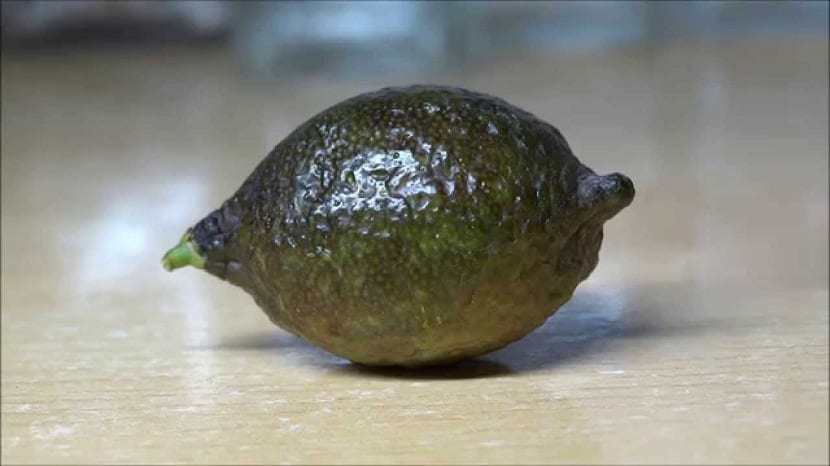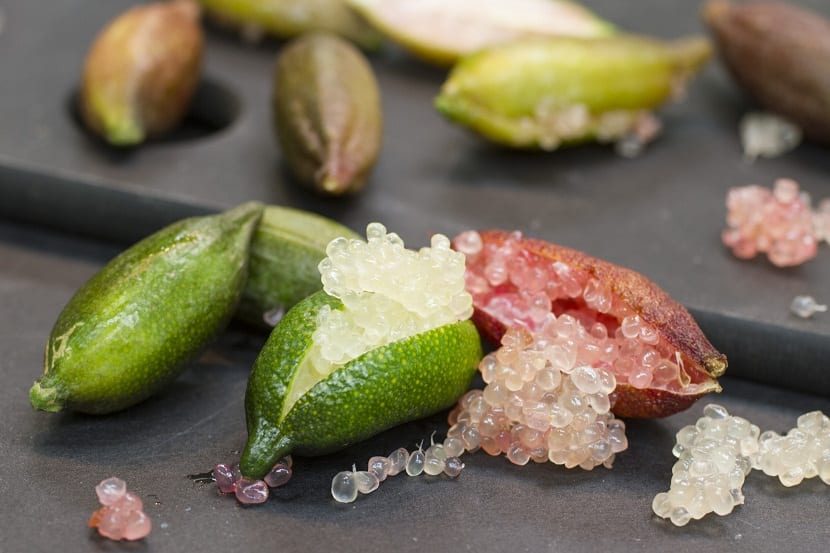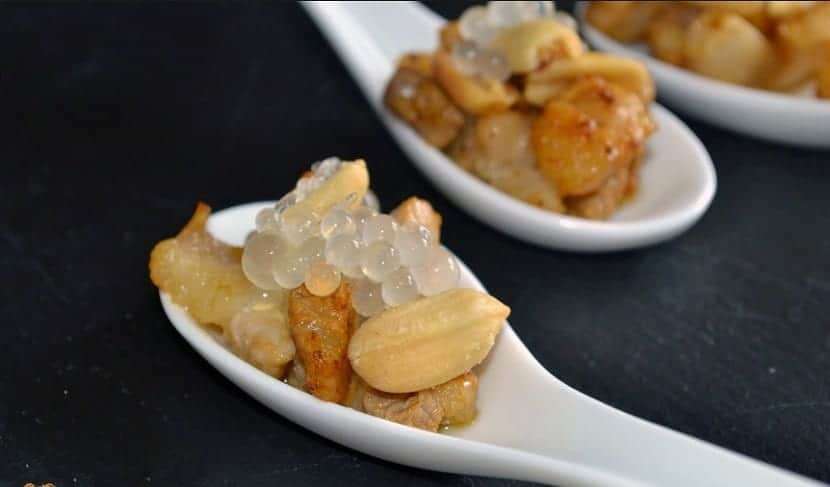
We know lemon caviar as a citrus fruit that, in addition to being tiny in size, has become very fashionable lately and is that despite the chefs being a fruit that they have grown fond of, it remains somewhat unknown to gardening specialists.
What is lemon caviar?

As it already says its name in Latin, microcitrus australasia, gives us the opportunity to have a slight knowledge that it is a shrub that comes from Australia and that it also has quite small fruits, as well as very original.
When you look at this fruit for the first Maybe it gives you the feeling that it is a giant pickle or it also looks like a pickle stuffed with eggs.
But we don't have to be fooled by appearances, this curious and spectacular elongated fruit, which is not larger than the size of a finger (it is a fruit that is also called «Finger lime»), they contain a pulp that has nothing to do with the pulp of the traditional lemon, it has a shape of small pearls which are crunchy and also explode in the mouth and offer us a pleasant flavor that, in addition to being a little acid, is also full of aroma.
And if this famous lemon has become so famous, it is because of its lemon flavor that in turn is mixed with notes of grapefruit as well as the texture that it has, which is something that fills us all with surprise.
On the other hand we can say that lemon caviar is quite a rare fruit, which also has a very high price (its price is between 300 and 350 euros per kilo) and that in general is not something that we have the possibility of obtaining, since being this fruit so little known it is quite difficult To be able to find it and if you have the option of having a greengrocer take the risk of bringing it to you, it will come out of your face, so it is best to plant a lemon caviar tree in our garden.
How and where to grow lemon caviar
Lemon caviar it is a bush covered with many thorns which is not very resistant to low temperatures, (supports a temperature of about -3 ° C), although plants can be installed in gardens where winters are very mild.
If we install this shrub in the garden, this will reach a height of approximately three meters, but if on the contrary we plant it in a large pot, you must remember that it will not become so big and that it will not give us so much fruit.
Native to Australia's rainforests and understory, lemon caviar enjoy the warmth and humid atmosphere.

Lemon caviar likes soils that are quite acidic, drained but still fresh, so we can place a special citrus compost, of course, but it is advisable, in summer, to control the humidity of the substrate and water as often as necessary.
Finally, our lemon caviar it has to be exposed in a sunny area, that is protected from the cold wind.
When can I harvest lemon caviar?
This type of lemon tree is self-fertile and flowers appear in March and April (again, we must be careful with late frosts) and the fruits are usually harvested from October to December.
How to use lemon caviar in the kitchen?
Lemon caviar goes very well with fish (sea bass, salmon), scallops, oysters, among others. But it can also enhance fruit salads to which it will give a spectacular sour note.
If this type of fruit catches your attention and you dare to plant it in your garden, tell us how it goes with it, since there is still very little information about this curious fruit.
I just bought one of these trees, and was a bit negative as to whether I could find any information on it. I am from El Salvador, Central America, a somewhat hot area and with only two rainy summer and winter seasons ... We will see how it goes. Thanks for the info.
Good luck, Lorena.
If you have doubts, you already know where to find us 🙂
Hello, about 3 years ago we bought a citrus caviar and the truth is that we have little harvest. My problem is a kind of disease that we do not identify, the leaves fall off a green branch and then that branch dries up. No treatment has worked and every year she loses several branches. I live in Granada with very cold winters and very hot summers, despite this, it has adapted well. All the best
Hello Justa.
I think that more than disease, what your plant has is that it is having a hard time adapting. It is a shrub typical of the tropical forests, where the climate remains more or less stable, without many changes. Although it supports up to -3ºC if it is punctual, the extreme heat hurts it.
To help it, you can pay it from spring to late summer, with guano for example, that it is a fast-efficient fertilizer. Follow the instructions for use, since although it is natural, it is very concentrated and an overdose would cause you a lot of problems.
Another thing that would help you a lot to adapt is a biostimulant for plants (such as this for instance). But it should not be mixed with the fertilizer: you can fertilize it one month, and the following month give it the biostimulant.
Greetings.
Hello, I have a citrus caviar bush planted in a pot 4 years ago and it has not flowered and therefore I have not seen any fruit. I am in L'Escala, Costa Brava and the pot is large, about 60 cm in diameter. Can you give me some suggestion so that he can cheer up and taste the fruits?
Thank you
Hello Alfonso.
Have you ever paid it? I ask you because if you haven't done it, I highly recommend doing it in spring and summer. To do this, you can use fertilizers or liquid fertilizers, such as guano. Of course, you have to follow the instructions for use so that problems do not arise.
A greeting.